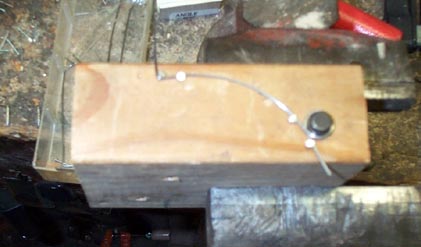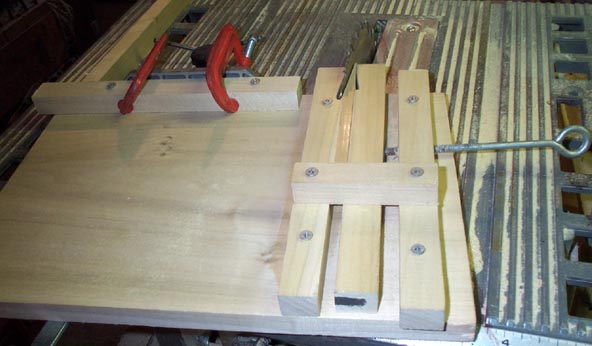
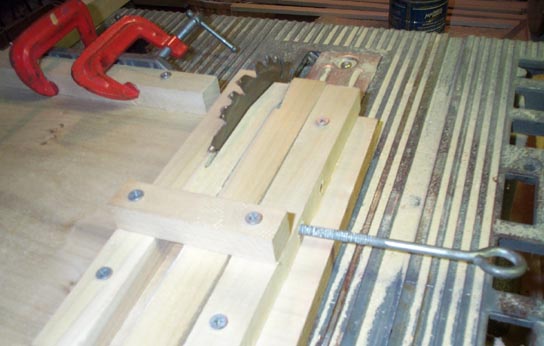
Chapter 14.3 - The Stopboard Pallets
The stop pallets are exposed, right out in front, so they were fair game for my old friend, the organ mender who thought that thick, clear car door hinge grease could cure everything. Also, they had been releathered with gusset sheepskin, stuck on with white glue. Please, dear reader, if you don't believe me, heed the words of the world renowned rebuilders Art Reblitz, Craig Brougher, D. L. Bullock, and many others too numerous to mention: DON'T LET ANYTHING BUT HOT HIDE GLUE TOUCH ANY PLACE IN A RESTORATION THAT MAY EVER HAVE TO BE REDONE IN THE FUTURE! It took forever to soak the white glue soft enough to scrape it off in tiny bits, without taking wood off the surface. If hot glue had been used, only a moment's washing would have taken off the replacement leather, leaving the surfaces perfect when they dried. Only to discover that he had apparently sanded off the original leather, leaving the two seating surfaces slightly bowed. so they would not rock evenly or reliably seal the pneumatic holes. Also, two of the originals had been replaced with roughly whittled replacements. So I decided to make all new ones. First the edge of a poplar board was scored with a vee-shaped groove, using a tool made from three pieces of wood that slid, clamp fashion, along the edge of the stock. This tool had a #10 machine screw, ground to a flattened point, through the middle board. As the tool was dragged along the board edge, the point of the screw scraped the spring groove in the center of the board edge. The board was then ripped into strips thicker than the final pallet dimension, and cut into oversized blank sticks. A rig was made to safely cut the shallow angled face of the stick, and then was used straight, to trim the flat face of the stick to the final 5/16" thickness. By making both seating surfaces on the same rig, they both ended up on the same plane, so the pallet would rock squarely. The same rig (not shown) was finally used to trim the edges of the sticks to the final 5/8" pallet width. Trimming only a little bit of wood with the carbide blade, and the work piece firmly held, produced a surface smooth enough to be used without much sanding, with very fine paper glued with Spray Mount to a very flat Formica table top.


The 9/64" center "rocker" pin hole was drilled only part way through, and a 3/32" hole was drilled all the way through near the end, to form the inner end of the guide pin slot. Later that slot was cut by hand with a snapknife, from the end of the stick to the guide hole. To accurately center these holes, a 5/8" Forstner bit was pinched over the sticks, and tapped so that its point served as a center punch. The sticks were cut to the final length all at once by sticking the sticks onto a scrap of plywood with carpet tape, and sawing through the whole thing. Note that there are a few sticks that appear to be backwards. One of the stops, the "Pneumatic to Manual" is a normally open valve, with the hole inboard of the rocking point, so the thick end of that pallet is opposite all the others.
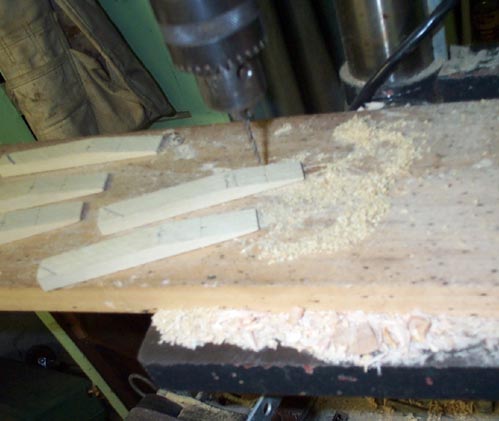
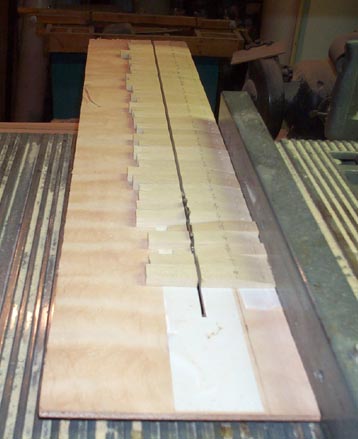
The pallets are releathered. To get reliable seating on the comparatively rough stop valve board, and assure good closure even with light spring pressure, Leather Supply House thick deerskin was selected. Since the glued surface is not flat, each piece of leather is stuck on individually. When dry, the pallets are trimmed, and the rear guide pin slot is cut out, holding the knife vertical. Thus the cut is slightly inwards from the edge of the slot, and the pin rides on a little fuzz of leather, rather than on the wooden guide slot edge, to prevent noise. The center rocking pin hole is punched right through the leather after assembly. This leaves the hole in the leather exactly concentric with the hole in the wood, and leaves a little burr of leather lining the hole. Otherwise the pallet makes a little clicking noise as it rocks around the center pin.
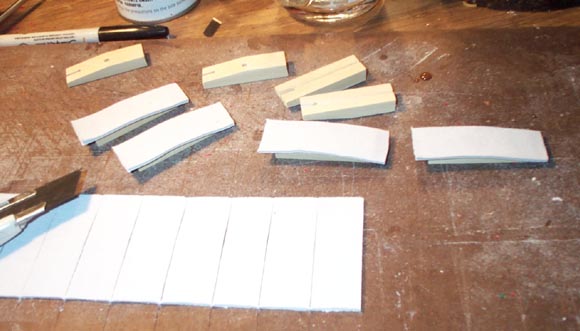
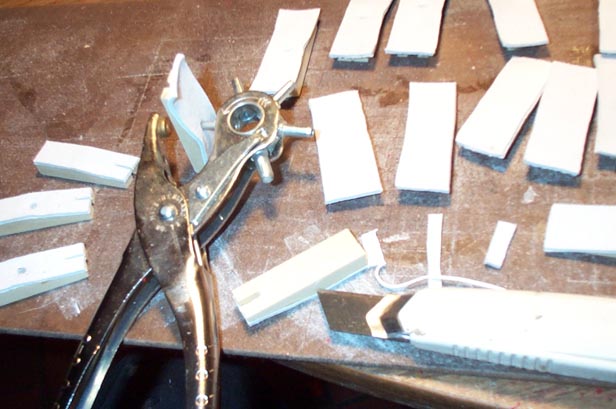
New sliding springs are made from #19 piano wire, to replace the old ones that were all rusted, and bent every which way in an attempt to get reliable action.
